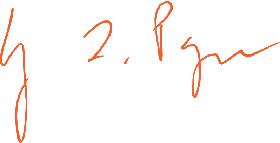
3 minute read
Editor’s Note
The past year has been traumatic. Now, as vaccines are administered and businesses reopen, the world turns to renewal and rebuilding. The journalism industry is no exception. Since last spring, for all the excellent pandemic reporting we’ve seen—coverage that saved lives—the media’s shortcomings have also been on painful display: the inability to focus on multiple, interconnected stories; a willingness to be distracted by demagogues and disinformation; the shameful silencing and sidelining of audiences and colleagues of color.
We now face a choice between an incremental return to where we left off and a more fundamental transformation of what we’re about. “What Is Journalism?”—this digital edition of the magazine— takes us down that second path, and we hope it will raise fundamental questions for you, too.
Advertisement
It is the most ambitious digital project we’ve ever tried at CJR. Every day this week, we’ll roll out a new chapter, each exploring a question from the most basic tenets of reporting: Who gets to call themselves a journalist? Where can journalism happen? How is it produced and shared? When do we engage with it? And finally—with trust in the press at an all-time low—why bother doing journalism at all?
This project was born out of pragmatic concerns: because many of our subscribers are away from the offices where they receive our print magazine, we figured it made no sense to send them something they would never see. But, as often happens with ideas like this, what began as a work-around soon became something much more. I am especially grateful to Betsy Morais, the managing editor of CJR, and to our partners at Point Five, the firm that designs the magazine, all of whom embraced the challenge of creating something that had never been made before. To address the subject at hand, and in tribute to the new forms of storytelling that constitute the media today, we’re using an array of formats: in the coming days, in addition to written features and columns, you’ll find audio pieces, interactives, a collection of diaries, and a comic strip—all from a wide-ranging group of contributors and subjects. Our hope is that by exploring the edges of our profession—where journalism sits beside art, community organizing, comedy, and conspiracy—we can gain inspiration and draw meaningful lines.
In a way, this project continues a theme that has consumed us since last fall, when CJR sponsored a two-day online conference in the wake of the recent anti-racism protests. We called it “The New Journalism: Rethinking the News” and explored how journalism should change. In December, we followed that up with a print magazine we called “What Now?,” examining the ways in which the media industry had already been forced to reimagine itself. With “What Is Journalism?” we go even deeper into the assumptions we make about our work—so much so that we’ve referred to this as “The Existential Issue.” We ask: Who says we can’t deliver the news by livestream, borrowed radio frequency, or text message? Why shouldn’t coverage be beautiful? Must we always identify ourselves to subjects? What is truth, and how can we be so sure we know it? And why, really, does anyone need a press pass?
The past year—the past decade, really—has been hard on our profession. Thousands of our colleagues have lost their jobs; dozens of outlets have shuttered; millions of readers have moved on. And the sad reality is that more difficult news is almost certainly still to come, as the economic fallout from the pandemic continues to reveal itself in its entirety. Yet there is optimism to be found amid the wreckage. We have reached a pivotal, promising moment, charged with reconceiving the nature of our industry. It is an opportunity to do nothing less than remake journalism.
Kyle Pope
Chapter 1: Who
The people we call journalists
Some reporters are given credentials, by a government or a private organization. Increasingly, technology companies like Facebook are taking on the role of deciding who is a “verified” news source. But it’s not always clear which outlets and personalities to take seriously; follower counts confer dubious authority, and the line between journalist and social media influencer has blurred. A reporter might be anyone who comments on the news or has an item of gossip to share. That can get dangerous, when false claims go viral. It can also be uplifting, in communities where people have taken it upon themselves to fill gaps in coverage—rejecting the idea that journalism means chronicling events from the periphery, and instead telling stories from within. —The editors










